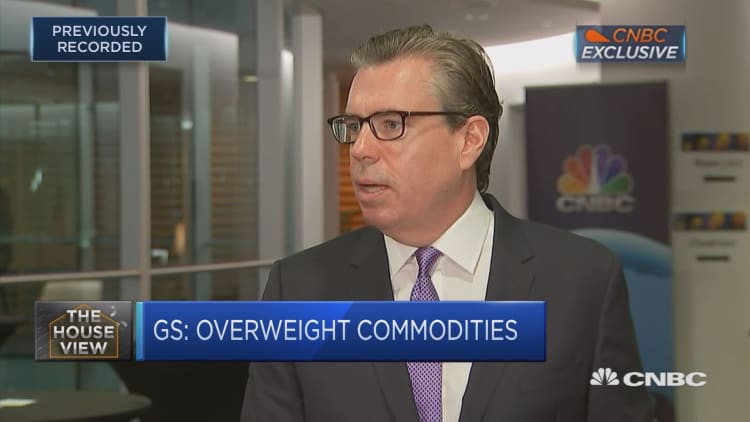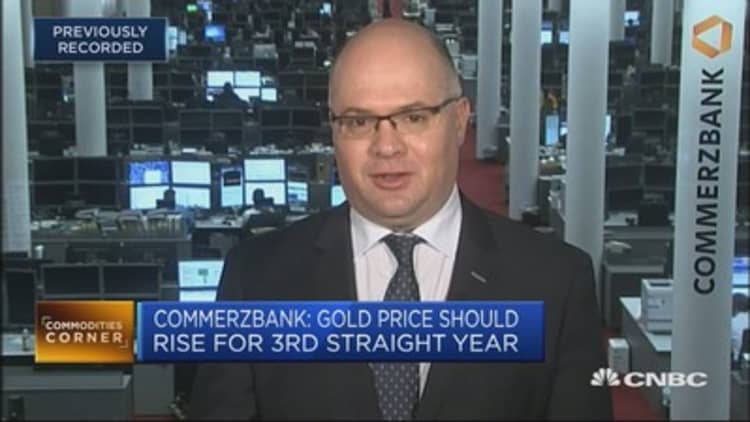
Oil traders are well-positioned to generate returns despite the likelihood of prices falling away from multiyear highs over the coming months, according to a senior analyst at Goldman Sachs.
Oil prices rose to their highest level since mid-2015 on Tuesday, as political concerns among some OPEC nations offset projections for higher U.S. oil production. Alongside its allied producers, the 14-member cartel is keeping supply limits in place for a second consecutive year in order to try to clear a price-denting glut of oil inventories.
"We're not bullish on prices but we are bullish on returns," Jeff Currie, head of commodities at Goldman Sachs, told CNBC on Tuesday.
Energy market environment 'very strong'
Currie said the underlying environment in the energy market was "very strong." And despite a relatively flat oil price forecast, traders investing in oil futures should still be able to benefit from "backwardation" throughout the year.
Backwardation is when the current price of oil is higher than a future cost of oil — a sign of higher immediate demand. Currie said this had created a "positive carry" for investors.
"When we talk about positive carry in oil, the investor can go out and buy the back end of the (price) curve, hold onto the position, roll it up higher, sell it at a premium and buy again. That's where we expect the returns from oil to come from," he said.
In a research note published late last year, Goldman lifted its Brent price forecast for 2018 to $62 a barrel and its WTI projection to $57.50 a barrel. The revisions were up from $58 a barrel and $55 a barrel, respectively.
The firm said a stronger-than-anticipated OPEC-led commitment to extend production cuts was likely to support prices through 2018.
Brent crude traded at $67.85 a barrel at around 11:45 a.m. London time (6:45 a.m. ET), up 0.1 percent, while U.S. crude was seen at $61.94, up 0.3 percent.
'Massive overheating'
Last week, a senior analyst at Commerzbank said oil prices would likely pullback by at least 15 percent over the coming weeks. Eugen Weinberg told CNBC on Friday that the current rally was "definitely due to massive overheating of the speculators and is likely to correct over the next month."
The price of oil collapsed from near $120 a barrel in June 2014 due to weak demand, a strong dollar and booming U.S. shale production. OPEC's reluctance to cut output was also seen as a key reason behind the fall. But, the oil cartel soon moved to curb production — along with other oil producing nations — in late 2016.




